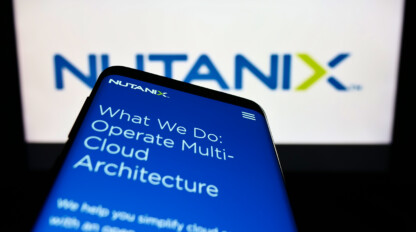What Is Multicast Routing & Is It Still Necessary?

There are three basic types of traffic for networking: unicast, broadcast and multicast.
Unicast allows you to send from one source to one destination. A great example of unicast is website traffic flowing from one server to a client device.
Broadcast, on the other hand, lets you send from one source to all possible destinations on a network. Television networks use broadcasting.
However, if you want to send a message from one source to a specific group, that’s where multicast comes in. Whether you want to watch a live stream or make your network run more efficiently, multicast routing is key.
What is Multicast Routing?
In a way, multicast lies between the extremes of unicast and broadcast. Multicast is a technology that allows you to replicate one stream on a network to many hosts. It provides a more efficient method for delivering traffic that can be thought of as one-to-many. Common uses of multicast routing include voice over IP (VOIP), video on demand (VOD), video conferencing, IP television (IPTV) and more. All network routers have the ability to leverage multicast routing, and all multicast communication is managed through applications making it easier to manage.
How Does Multicast Routing Work?
Multicast routing uses a designated range of IP addresses for communication. With multicast, a source sends one copy of data to one multicast address, which then distributes data to multiple recipients. Ultimately, it involves sending the same message to several endpoints.
Multicast routing employs Protocol-Independent Multicast (PIM) protocol, which has several variants. The Firebox supports PIM Sparse Mode (PIM-SM) for a handful of devices subscribed to the multicast. These devices are multicast receivers, and can be located anywhere in the world, regardless of the network.
The central point in the multicast domain is called the Rendezvous Point (RP), which is a router that receives all multicast traffic destined for the multicast group. The Firebox interfaces must be enabled as RP candidates that are involved in multicast routing, allowing the Firebox to periodically community its RP candidacy to the PIM-SM network.
Once multicast routing is enabled, two new policies will be added to your configuration: MR-PIM-Allow and MR-IGMP-Allow. Within a multicast policy, the only options that be specified are incoming interfaces, source IP addresses, destination IP address, protocols and ports.
The Benefits of Multicast Routing
Broadcast is extremely inefficient for the majority of applications. It’s not realistic over the internet because users would be constantly receiving a huge amount of unnecessary information. This leads us to the question of whether you would want to use multicast or unicast. Multicast routing comes with a variety of benefits, including the ones laid out below.
Multicast is more efficient.
For one, multicast routing is more efficient than unicast routing. With broadcast routing, all devices will receive the stream, whether or not they have joined a specific multicast group. Only devices that want to receive the multicast stream will join a multicast group. This prevents unnecessary time or productivity loss and also helps enhance security.
Internal video training is supported.
In an organization where video content is shared internally for training, multicast may be a better choice than using unicast streams. Whether you want to share recordings of all-company calls, specific training sessions, video case studies, tutorials, etc., this capability will drastically increase efficiency. Multicast routing uses group communication where a host will announce it wants to join a specific multicast group for a specific stream.
Corporate communications are kept secure.
No IT department will ever argue that there is too much security, especially with a drastic increase in emerging threats every day. Denial of service is a common form of cyber threat we’re seeing nowadays, causing a large volume of network traffic so it can no longer respond to requests. This is just one example of how bad actors will attempt to target your network.
Even if you are diligent about network security, it helps to add an extra level to your internal videos. Whether the videos contain sensitive client information or projects that have yet to be announced, multicast streaming is a far more secure option than using a third-party unicast OTT streaming application to deliver content over the internet. With multicast, you’re operating within a secure, private IP network.
Examples of Multicast Routing
One great example is the internal video training discussed earlier. In today’s gigabit networks, multicast enables you to have 1 stream to 100 hosts instead of 100 streams going to 100 hosts. This is far more efficient and saves on network resources.
Live video conferences are another great use for multicast routing, allowing for an efficient stream of communication. Being able to have multiple collaborations with both video and audio is crucial, and multicast routing makes this easier for businesses.
Is Multicast Routing Still Necessary?
The question remains: is multicast still a technology we need in a gigabit network era? Even as networks get faster and more bandwidth becomes available, we will always have a finite amount of network sources to use for transferring data. If we can optimize the transmission of data, this will increase the range of how far network resources can be used.
Multicast dramatically reduces your network traffic by offering a single source of communication to simultaneous multiple recipients. It is an excellent way to push data to multiple hosts, and it will always have a place in networking.
Let ivision’s Team of Experts Help
ivision’s Network team has extensive experience with all kinds of routing, and we’re here to help you design a strategy that best aligns with your business needs. Whether it’s best practices for network design, moving your network operations center remote or educating on the newest generation of wireless technology, our team of subject matter experts is eager to help with your network needs. Our goal is to set your team up with solutions that are flexible, scalable and secure. Learn more about our network capabilities or contact us to get started today!



